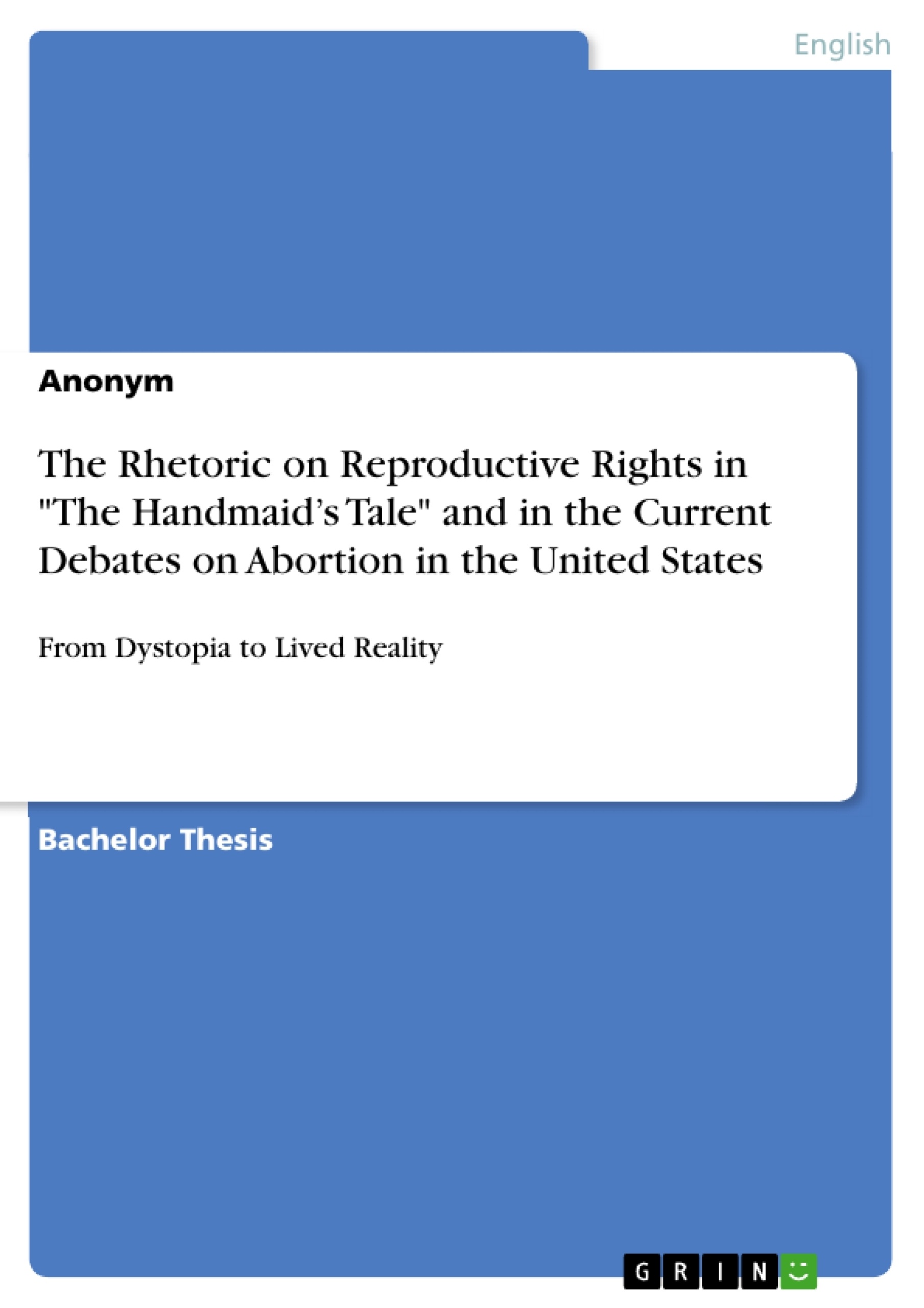Margaret Atwood's "The Handmaid's Tale" has transitioned from a dystopian novel to a reflection of present-day realities, particularly evident in the ongoing debates over reproductive rights in the United States. The recent Dobbs vs. Jackson Women’s Health Organization decision, overturning Roe v. Wade, has intensified these discussions, with Atwood's novel serving as a stark backdrop.
Reproductive rights, encompassing the freedom to control one's reproductive choices without interference, are integral to human rights. However, societal norms and legal rulings often challenge these rights, highlighting the persistent struggle for autonomy, especially for women. Atwood's narrative provides a lens through which to examine these complexities, as the imagery of Handmaids becomes synonymous with resistance in the face of oppressive systems.
In this context, rhetoric emerges as a crucial tool in shaping the discourse on reproductive rights. This paper aims to explore the parallels between the rhetoric in "The Handmaid's Tale" and the contemporary abortion debate in the US. By analyzing euphemisms, metaphors, and institutional framings, connections between fiction and reality are examined to underscore the enduring relevance of Atwood's narrative.
Table of Contents
- Introduction
- The Rhetoric on Reproductive Rights
- The Debate on Abortion in the US
- The Handmaid's Tale and Reproductive Rights
- The Importance of Rhetoric
- Euphemisms
- Pro-Choice and Pro-Life Labels
- Rituals
- Metaphors
- The Fetal 'Heartbeat Bills'
- Metaphors of Objectification and Dehumanization
- Institutional Framing
- Religious Framing
- Political Framing
- Conclusion
Objectives and Key Themes
This thesis aims to demonstrate the parallels between the rhetoric on reproductive rights within Margaret Atwood's The Handmaid's Tale and current debates on abortion in the US. It explores how the novel serves as a poignant commentary on the complexities of reproductive rights in the face of societal norms, prejudices, and recent legal rulings.
- The historical context of reproductive rights in the US and its relevance to The Handmaid's Tale
- The role of rhetoric in shaping the discourse on reproductive rights
- The use of euphemisms and metaphors in both the novel and the real-life abortion debate
- The influence of religious and political framing on the discourse around reproductive rights
- The enduring relevance of Atwood's novel as a reflection of the ongoing struggle for reproductive rights
Chapter Summaries
The first chapter, "The Rhetoric on Reproductive Rights," provides a historical context for the ongoing debate on abortion in the US, particularly focusing on events leading to the Dobbs decision. It then connects these events to Margaret Atwood's The Handmaid's Tale and explores the novel's relevance to the current reproductive rights debate, highlighting the importance of rhetoric in shaping the discourse.
The third chapter, "Euphemisms," examines the concept and role of euphemistic language in the novel and the ongoing US abortion debate. It analyzes the "Pro-Choice" and "Pro-Life" labels as examples of euphemistic language usage, and how rituals in the novel employ similar linguistic techniques.
The next chapter, "Metaphors," focuses on the function and relationship of metaphors to the central theme. The analysis explores the "Heartbeat Bills" as instances of metaphorical language usage and investigates dehumanizing and objectifying metaphors prevalent in both the novel and the real-life debate on abortion.
Keywords
Reproductive rights, abortion, The Handmaid's Tale, Margaret Atwood, rhetoric, euphemisms, metaphors, institutional framing, religious framing, political framing, US Supreme Court, Dobbs decision, Roe v. Wade, fetal viability, trigger laws, heartbeat bills.
- Citar trabajo
- Anonym (Autor), 2023, The Rhetoric on Reproductive Rights in "The Handmaid’s Tale" and in the Current Debates on Abortion in the United States, Múnich, GRIN Verlag, https://www.grin.com/document/1450520



